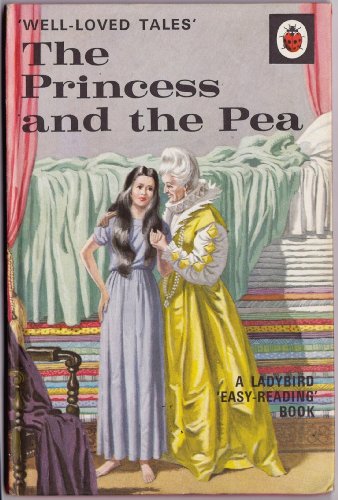
During the month of April this year, whilst participating in the A to Z Challenge, I was privileged to encounter the work of Misky whose blog It’s Still Life, showcases two distinct things, poetry written by Misky and illustrated using Generative Artwork created by Misky using the Midjourney AI app. So amazing were these images to someone who is in part, a visual artist, that it inspired me to make an exploration of Generative AI for myself. At the same time, AI has been hitting the headlines big time and mainly for its use in text generation and the impact it might have on jobs and since writing is another thing that I do in my day job, I was also intrigued to see whether AI might be of any use in a company such as I work for. (I am the gradually retiring General Manager of a food manufacturing company). It has been a fascinating voyage of discovery and to cap it all, lying awake at 4 o’clock this morning, I found myself listening to “The Conversation” on the BBC World Service and what should be the topic, but AI with special reference to the involvement of women. So – mind on fire, I am going to draw this series together, although I freely acknowledge I have but dipped my toe in the waters of AI and I may return to the topic in the future…
To recap the three articles I have already written:- In the first one, I tried out ChatGPT to see what it research and write about one of the topics from my A to Z and immediately encountered the phenomena of AI hallucination – the ability, in fact tendency of AI to make things up. I also “showcased” my first attempts at visual collaboration with the Midjourney bot .
In the second report, I compared ChatGPT to Writesonic which produces more lengthy articles – testing them against a typical (for me) work assignment.
In the third report, I looked at the most controversial assertion about AI – that AI might in the future, eliminate human beings – Terminator-style and referenced articles that thoroughly refute the need to worry about that particular outcome – go re-assure yourselves! However, there are many things about our present and future use of AI that do bear looking at and these were raised in the episode of “The Conversation” that woke me up this morning. The programme, presented by a woman, featured two women working in the field of AI, one a philosopher and one an expert in data analysis and as well as the general concerns that need addressing about AI, they highlighted the general lack of representation of women in the field of AI – only one CEO, qualifying women failing to get jobs in the industry and so on. They did however point out that one of the changes to AI itself in recent times, has been the accessibility of use – no longer do you need to have a degree in computer programming – you could make your first interaction with ChatGPT in the same time it would take you to query something on Google. Which brings me back to Misky…
Misky was not only the inspiration for my (deepish?) dive into AI, but was extremely helpful and encouraging to me at the outset, itself a reflection of how women tend to be more collaborative, good team players – a fact which the contributors to “The Conversation” suggested is a good reason for women to me more involved in AI companies, in reviewing the implications and in forming the regulation which is undoubtedly necessary around AI. A few days ago, I was delighted to meet Misky face-to-face on a Zoom call after many text interactions online and one of the things that she shared in our too-brief call, was that she had had some push-back from certain readers of her blog, about the use of AI images. I would like to talk to her more about these issues, but the participants in “The Conversation” raised the issue of how artists, whose work has been studied by AI to create new images “in the style of”, are being short-changed. You may have been wondering about the image at the top of this post – I created in Midjourney by prompting it to “imagine” Knaresborough railway viaduct “in the style of Hokusai” – a master of Japanese woodblock prints. I have used this subject as my test piece for exploring what Midjourney can do as you will see in the previous post. Now Hokusai is long dead and so the issue of compensation is hardly an issue, but another group of more recent artists might object. I am working on a spoof post – “How to Make a Body” a tale of human reproduction in the style of an Internet recipe ad although, like Misky, the writing is all my own, I wanted an illustration to fit with the tone of the piece and prompted Midjourney to “imagine” a woman in a hospital bed, holding her newborn baby and with her husband leaning in “in the style of a Ladybird book cover”. For those of you who may not be familiar with Ladybird books, they were written for children starting in the 1940’s and running until the 1980’s and they feature a distinct style of illustration.
In recent years, a series of spoof books in the Ladybird style and aimed at those who had grown up with the original series, have been vert successful, for example…
I had no idea whether Midjourney would be able to fulfil my prompt, there are lists of artists’ styles you can use with Midjourney but I hadn’t seen this one – I was not disappointed!
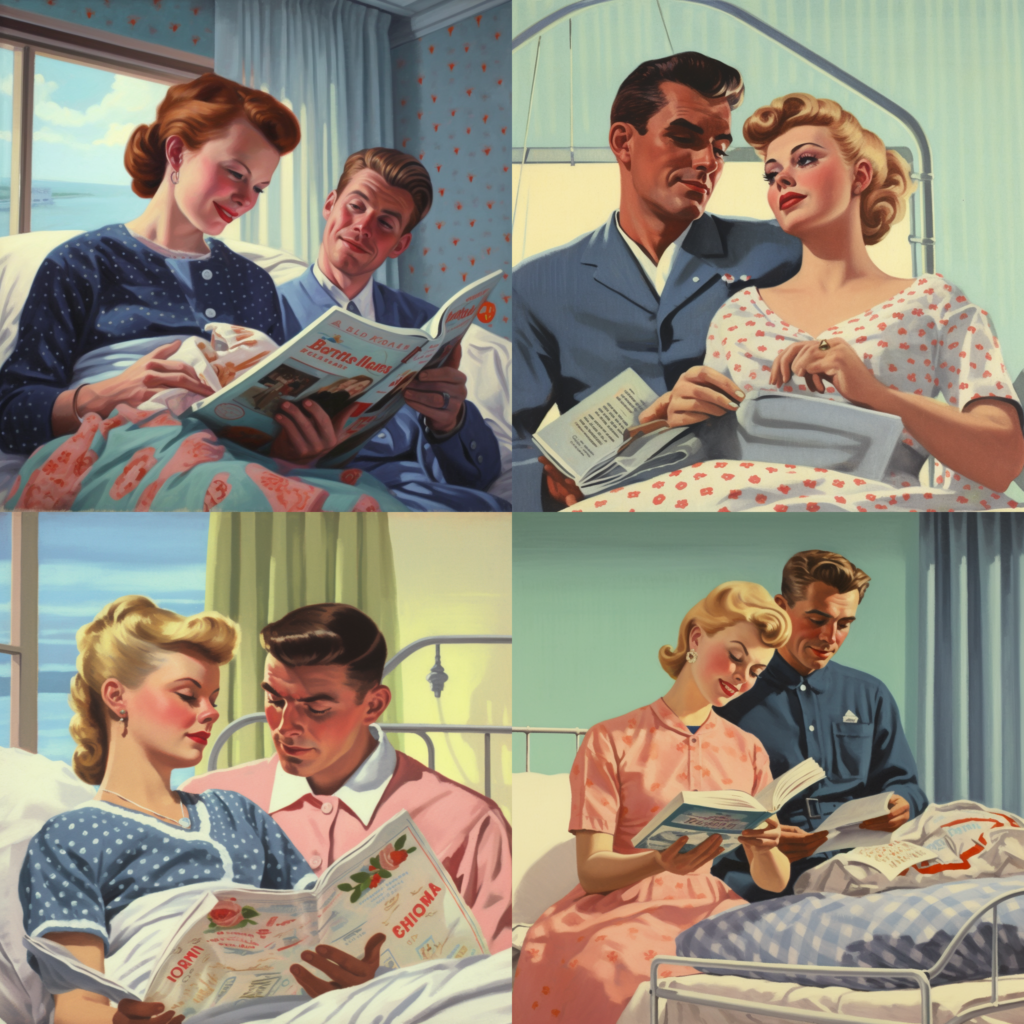
I am keeping my powder dry as to the final image I chose but this first set of four (Midjourney shows off by producing not one, but four attempts in under sixty seconds) – which was done to the prompt of “A new mother in a hospital bed with her husband leaning in as she holds their new baby in the style of a Ladybird Book Cover” has misunderstood my intention and the mother is holding a magazine rather than a baby – though the graphic style is very Ladybird book-like. I acknowledge that I am still only a beginner in my use of prompts with all the forms of AI I have tried so far and there is undoubtedly an “art” to getting it right which is why I said “I created in Midjourney”. Although I am a competent watercolourist, screen-printer and other forms of illustrative art, I could not produce images such as the above and certainly not in sixty seconds. So, how much of this creation is my prompt, how much is the brilliant programming behind Midjourney and how much is owed to the various artists who could produce the illustrations of the Ladybird books? I cannot begin to answer that question but it does raise an issue which needs considering in formulating regulation around the use of AI. Meanwhile, like Misky and I, jump in and have a go and get a feel for yourself of the answer to the god-like feeling of creating with an AI tool…
Much of the debate around the consequences of the rise of AI, is around its impact on jobs and the potential losses and gains. As I described in my first report, the development of computer spreadsheets swept away the lowly positions in Accountancy but opened up many more jobs at the high end of the profession and although this might be the hope for AI, that it liberates us from the menial and allows us to create new roles – roles which might be beyond the capability of AI to imagine, at present, it is not just the menial tasks that are being threatened by bots like ChatGPT, but some roles higher up in various industries. Having said that, given the tendency of AI’s to hallucinate, I wouldn’t trust an AI’s writing without an experienced human checking the output of any writing before sending it out! Also, when you are a creative individual yourself, then trying to get AIs to produce exactly what you have in mind is tricky. In my 2021 A to Z challenge, I was trying to complete a science-fiction novel and the exercise gave me enough momentum to indeed finish it a few months later. Then I set about creating a book cover for it – to feature the final denouement – a tense scene set in a space-elevator on the edge of space. I prepared the background view by Photoshopping some NASA photographs looking the length of the Red Sea towards Palestine, painted in a great river estuary as per my planet, and then superimposed some 3D elements which I drew up in AutoCAD and finally added the title and my name. You can see this below, however, I felt that the result was not quite up to the standard of artwork commissioned by big sci-fi publishers and imagined that in the unlikely event of the novel being published, an improved version of the cover would be substituted for my “sketch”.
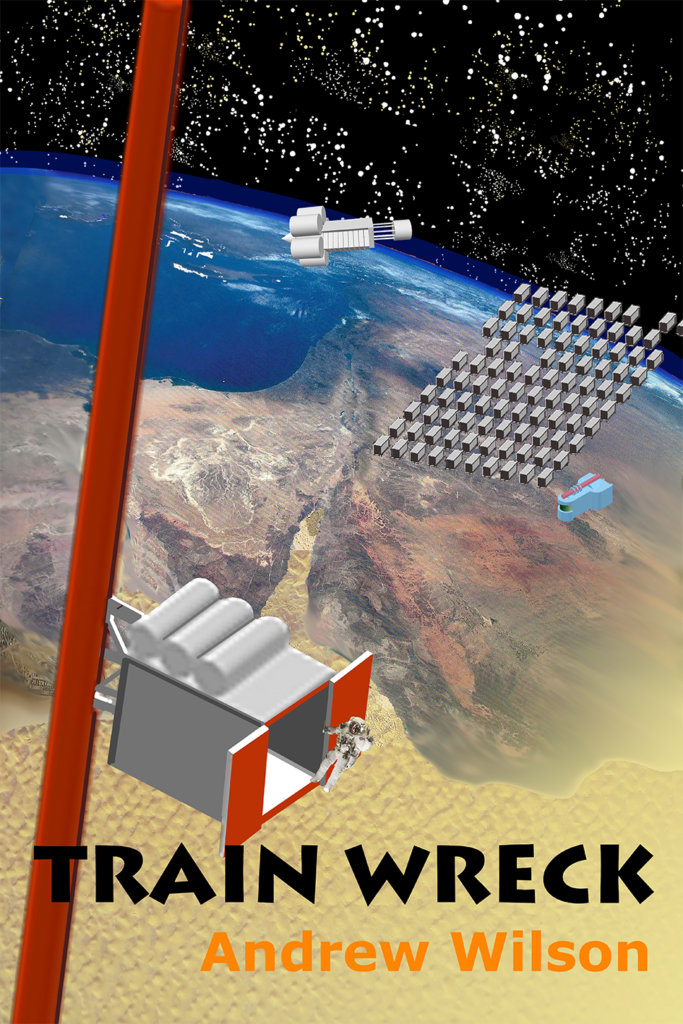
Back to today, and naturally, I thought it would be a good test of Midjourney to see whether it could be used to produce a better version of my cover. Well, the first attempts were brilliant style-wise, but nothing like the image I wanted and many attempts followed to no avail…
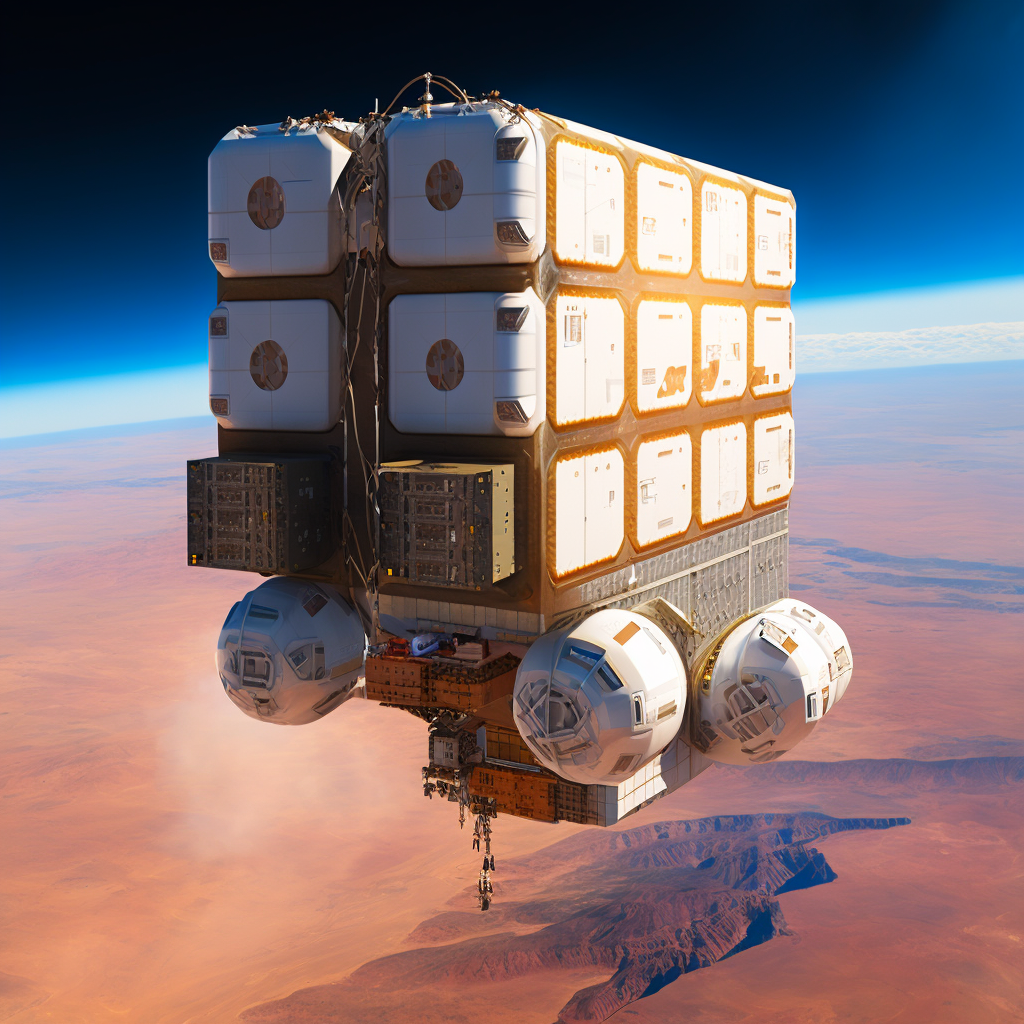
My prompt read “space lift arriving at 300 miles above Earth like planet over Sahara like region array of cargo containers spread out in one layer small spaceship approaching“Midjourney couldn’t understand Space lift and I had to change lift to elevator, it couldn’t understand “array of cargo containers” but it did have all the sci-fi style I wanted. So then I decided to create a space view background without the lift and substitute it into my own cover illustration. Bingo!

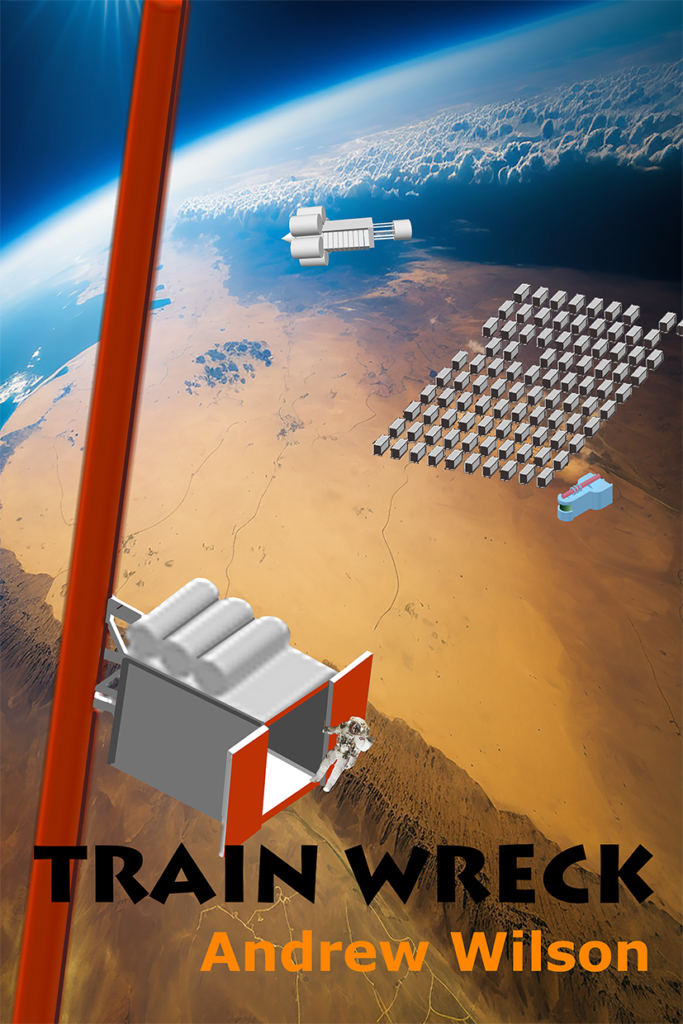
Still I hanker for the crisply detailed images of the elevator that Midjourney is capable of if only I could prompt it correctly – so a work in progress… What this exercise does show, is that it is possible to use AI for the things it can do better in combination with human talent.
In Conclusion…
This exploration of AI has felt like a marathon and it is just one person’s experience and I am really only at the beginning of my exploration, I’m sure I will find both text and image-generative bots to be of use in my future work and play. I urge you all to experiment for yourselves, form your own judgements (and please share your results by linking in the comments), join the debate over the regulation of AI, and explore other artists, in particular, Misky, who began this journey…
